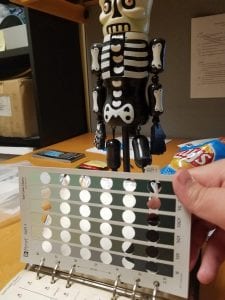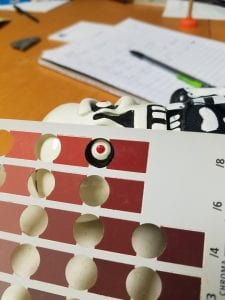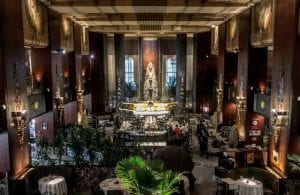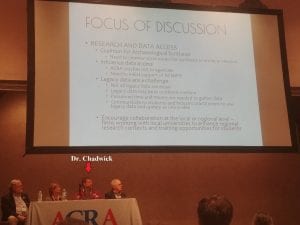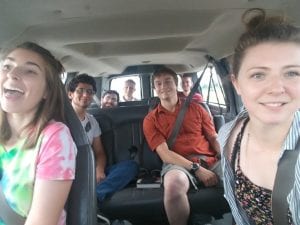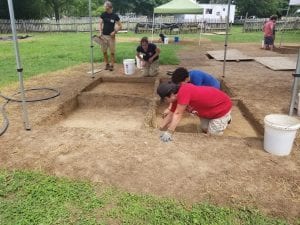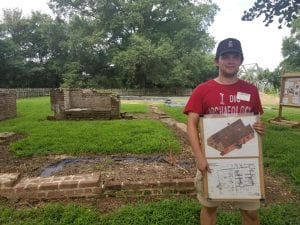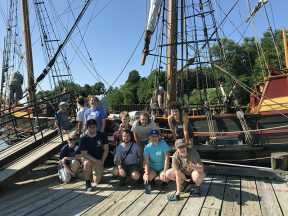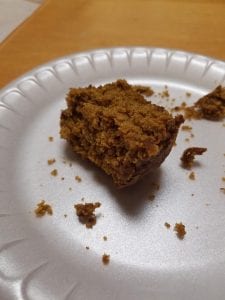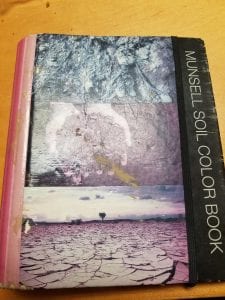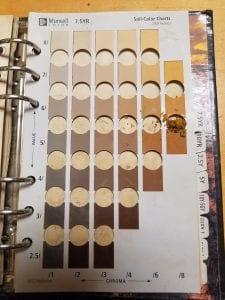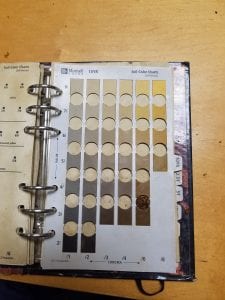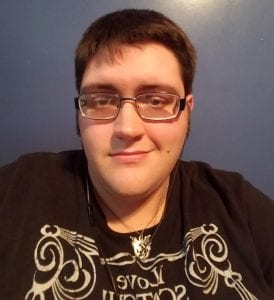By: Genevieve Everett
If someone told me a year ago I’d be living and working at Isle Royale National Park (ISRO in NPS speak) in the middle of Lake Superior, I would have said, “Where?” Obviously, I knew where Lake Superior was, but I knew nothing about the cultural history and the archaeology of the region, especially that of Isle Royale. Once I heard about the job/Pathways internship (thank you Danielle!), I began the arduous process of applying on USAJobs.com. After a month or more of waiting, I was offered a position as a seasonal Arch Tech for ISRO! May 29th came fast, and before I knew it, I was on the Ranger III floating across Lake Superior to one of the most beautiful places I’ve ever had the pleasure of living and working for three plus months.

An office with a view!
A little background on the island…Isle Royale became a National Park in 1940, opening it up to the American public, and protecting it from further development. Before the inception of the park, Euro American fisheries and cabins dotted the shorelines, mining companies prospected for copper, and long before that, native peoples utilized the island, “Minong”, meaning “The Good Place”, for its plentiful resources, including caribou, sugar maple, and fish. Additionally, the island is one of the first places where American Indians mined copper industriously, which is best exampled at Minong Mine on the island’s north shore. All these histories are intertwined into a complex network of traditional beliefs, stories, and experiences that make this place so intriguing.
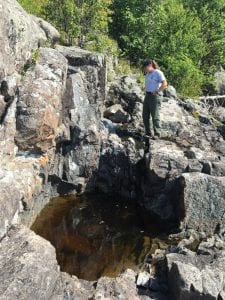
Marley in front of one of the prehistoric copper mining pits
This summer I got to work with a fantastic group of people: my supervisor, Seth DePasqual, and my two co-workers, Marley Chynoweth and Rudy Martinez II. Throughout the summer, we performed site monitors around the island, checking on existing sites, assessing their condition and potential threats. For example, some sites are near the shoreline where there is potential for erosion. It is our job to record this and make a determination for future remediation. Another project that I really enjoyed was a pedestrian survey to find an early 20th century fur trappers cabin near one of the inland lakes. All that we knew was that it was at the southwest end of the lake, which covered a large swath of land. Several of our sites were only accessible by water, so, we got to spend a lot of time paddling! In addition, Marley and I had a chance to leave the island for a week to work at a Fur Trade site with our friend Danielle (IUP Applied Arch alumna) along the Grand Portage in Minnesota. Several trade items were recovered from this site, including, glass beads and tinkling cones.
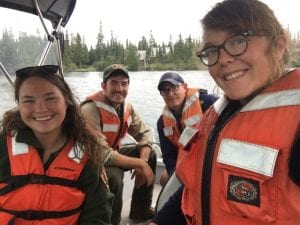
2018 ISRO CRM crew on the trusty Nighthawk!
For me, the highlight of this summer was the Relict Shoreline Survey (RSS). The relict shoreline or Nipissing (ca. 5,000 years B.P.) lake water levels were much higher than they are today. Using GIS and LiDAR, Seth located areas along the old Nipissing shoreline that might have a good place to land a canoe back in the day. Using a Garmin GPS, we would bushwhack to these areas. Today, they do not look like the beaches that they were 5 millennia ago, instead, there are thick groves of trees and other vegetation. It isn’t until you sink a shovel test in that you tend to find fine beach sands and pebbles. We had a lot of success in locating new sites this summer, all of which had chipped stone artifacts and/or copper (modified/natural) artifacts.
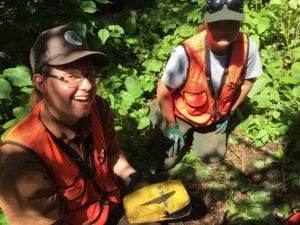
Danielle and Marley showing off a copper knife with tang from one of the Nipissing sites
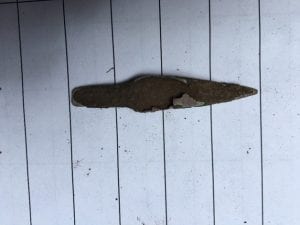
Small copper point found in a tree throw at a Nipissing site
As a kid I wanted to go to sleep away summer camp, but never did. Well, that wish came true this summer, because living at Isle Royale was like adult summer camp. On the weekends I’d hike the Mott loop, a 2.7 mile trail on Mott that has some of the most beautiful views (in my opinion) on the island, picking wild blueberries along the way. Early in the summer, I took a weekend trip to Amygdaloid Island with some friends to see more of the north shore. That same weekend, we hiked back from McCargoe Cove, down past West Chickenbone Lake (lots of moose there), east along the Greenstone, up to the Ojibway Tower, and back down to Daisy Farm. I caught my first ever lake trout. I swam in the cold, cold waters of Lake Superior at night, and quickly ran back to the sauna to warm up. Got to go to the Rock of Ages lighthouse, that is being restored back to its original glory by https://rockofageslps.org/. Was part of a Search and Rescue (SAR) crew, carrying an injured visitor out of the back country on a litter. Kayaked from Mott to Rock Harbor, and back again on a particularly calm day…..

Kayaking down Lorelei Lane

My “backyard”

Rock of Ages Lighthouse
Okay, I’m done blabbering on. The point is, this was an incredible summer filled with so many personal and professional experiences that I will never forget. By extension, I feel more confident in my abilities as an archaeologist. While it was hard to leave the island last week, I am ready to take on the next challenge…hopefully somewhere just or equally as beautiful as Isle Royale.
IUP Anthropology Department


